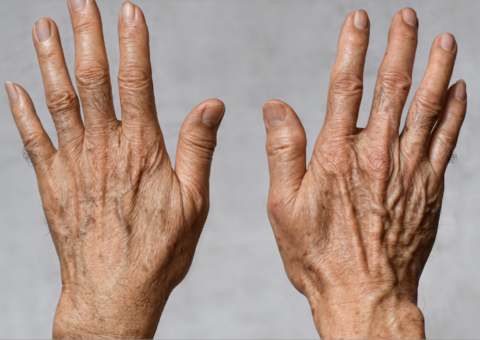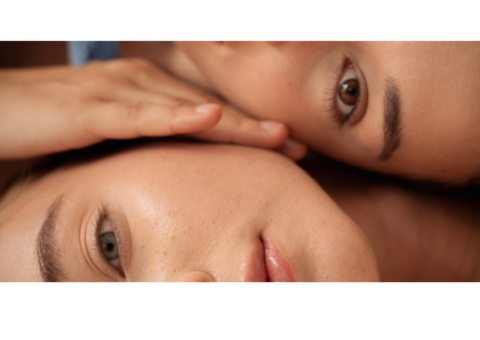This month in celebration of World Vitiligo Day on 25 June, I would like to share with you a patient’s story who is very close to my heart. Not only was she the match which kindled my fascination into holistic integrative dermatology but she was the reason I spent two years studying the pigment cell condition of vitiligo and developing a test which would predict a patient’s response to treatment.
Mrs H – you were one of the reasons I became a dermatologist. Thank you for allowing me to share your story.
I met Mrs H as an eighty-two year old woman in 2009 at the end of her tumultuous vitiligo story but let’s go back to the beginning.
Mrs H. was first seen in 1995 at the Groote Schuur Hospital phototherapy PUVA clinic. She presented with a short history of white patches which had developed over her body and had a background history of rheumatoid arthritis. She had been a widow for fifteen years and it was noted at the initial consultation that she seemed depressed. A diagnosis of vitiligo was made and treatment was started with topical corticosteroid creams and UVA light therapy (called PUVA).
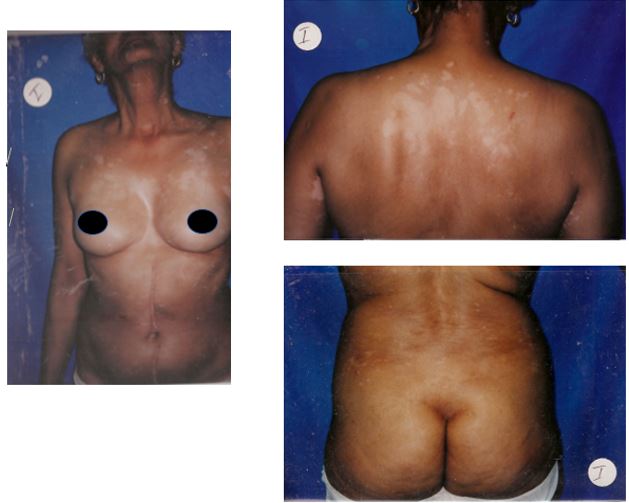
She demonstrated no response to therapy and her areas of depigmentation continued to expand, despite a mini-pulse of oral corticosteroids. She was (as are most vitiligo patients) obsessed with “…is it (the pigment) coming or going?”
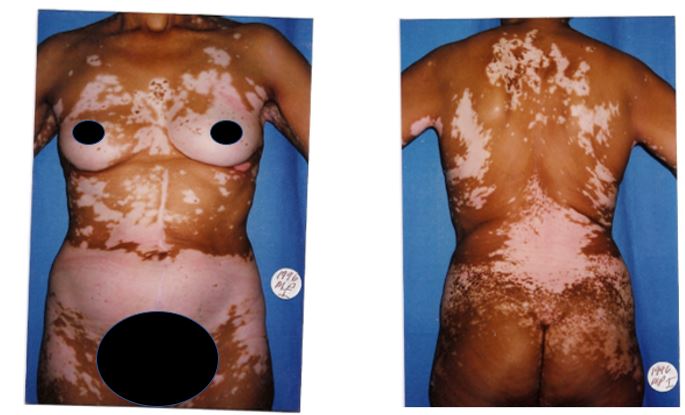
One year after starting treatment, she confessed to suicidal ideation and she was urgently referred to psychiatry where a cocktail of antidepressants were started. Three months later, after sixty-five treatments of PUVA and a second mini-pulse of corticosteroids, a remarkable burst of repigmentation was seen. She met and fell in love with a new boyfriend and she said: ‘…at last I am happy with myself’.
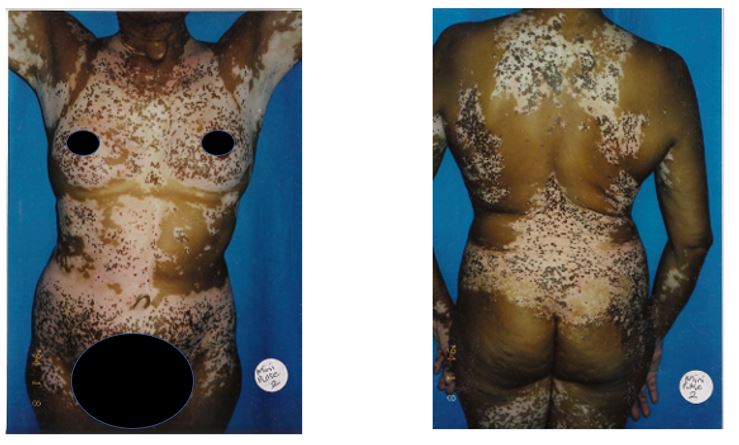
In September 2000, following the sudden and devastating deaths of a close friend, her sister and her boyfriend, she experienced severe depression and once again, her pigment was lost.
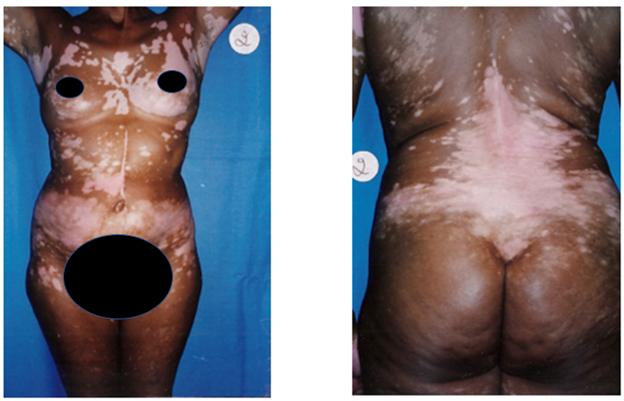
Despite continuing with the PUVA treatments, she continued to lose more pigmentation. This was exacerbated by a bout of pneumonia.
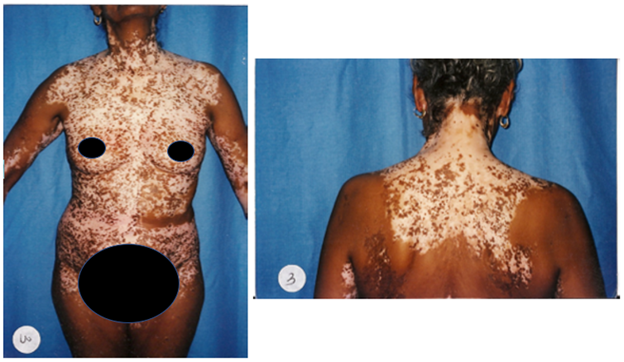
In 2001, following review by the psychiatrists, her antidepressant medication was adjusted and it was decided to continue with her PUVA therapy despite her high accumulative dose of 2910 (visit no. 378). In April 2002, her pigment exploded.
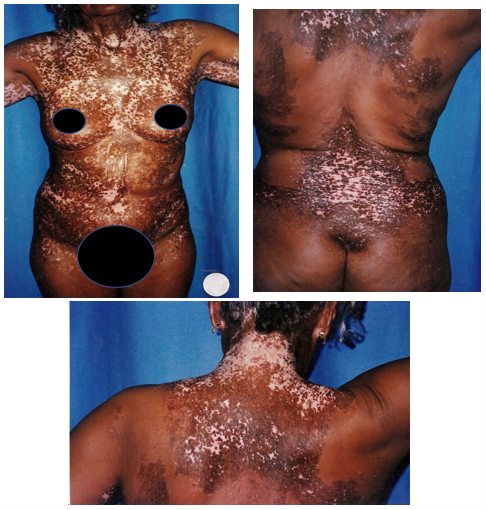
Her clinical course continued to fluctuate with her mental state until in July 2004, it was decided to stop her therapy due to her increasing fragility and age.
Mrs H demonstrates the devastating psychological implications of vitiligo and the striking correlation between her mental state and her response to therapy. In my thesis submitted in 2009 I wrote in my conclusion “It provokes a question as to whether the impact of the state of mind on a patient’s therapeutic course has been underestimated.” Now in 2021 this question is no longer in doubt. The connection of the gut:mind:skin axis is well established.
How does this work? In a nutshell, emotional stress can cause ‘leaky gut’ and since 70-80% of our immune system lives in our gut, this can trigger an inflammatory cascade which then impacts the skin.
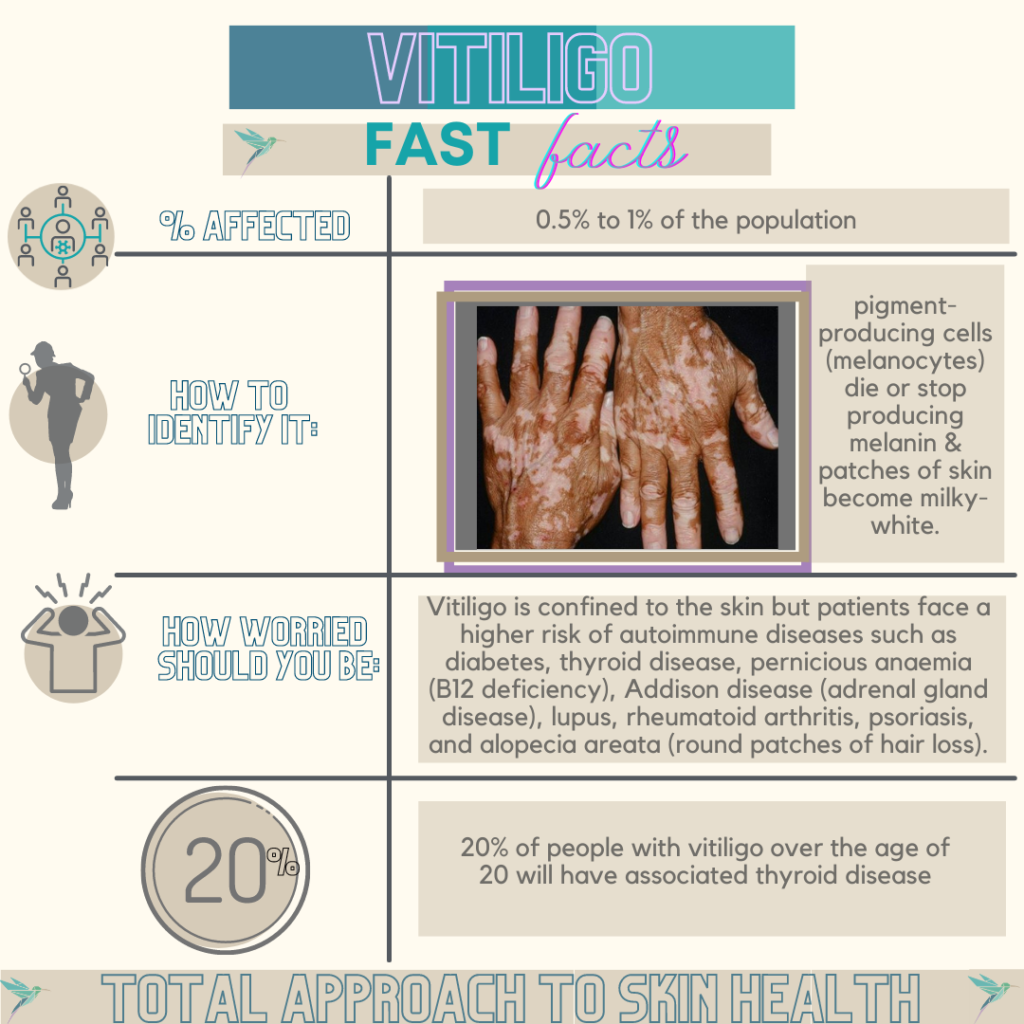
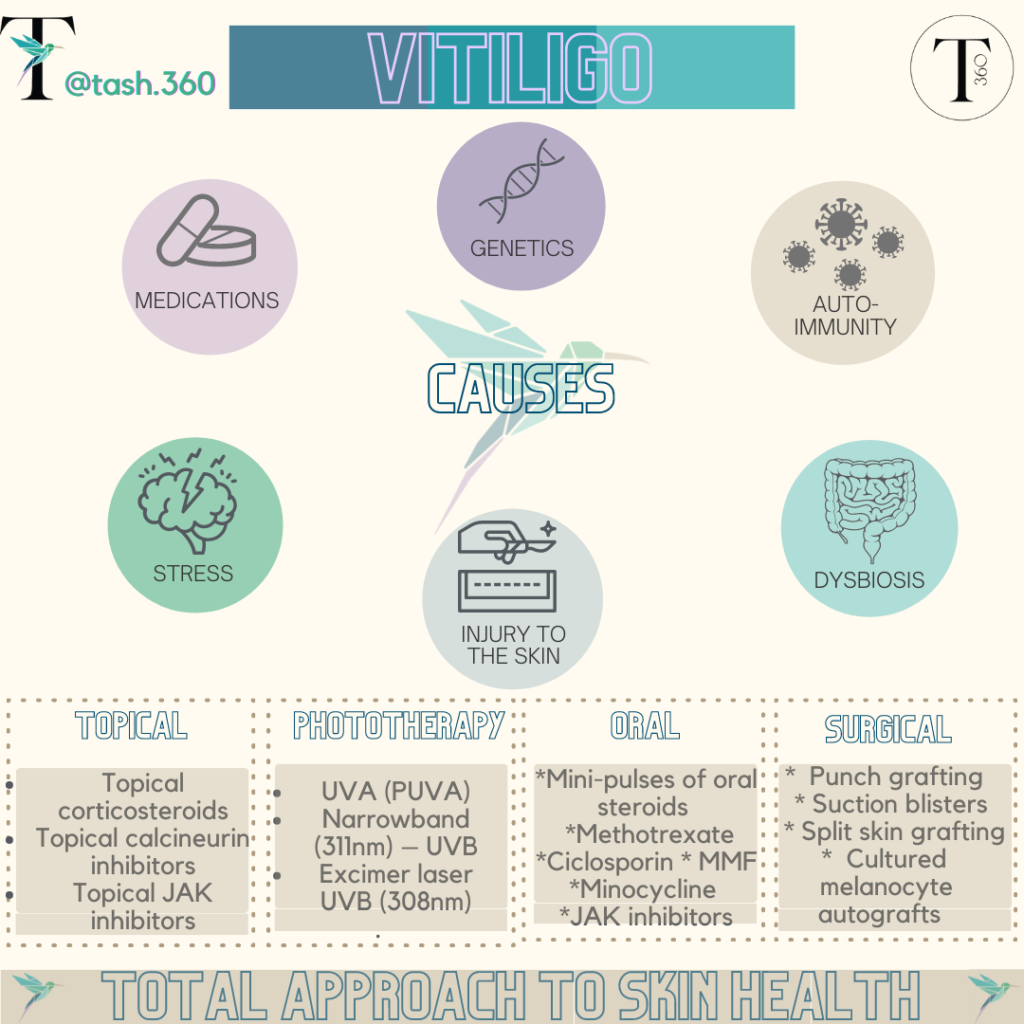
My mentor Prof Gail Todd always told me that my greatest teachers would be my patients. Mrs H – you were my first and greatest teacher. Thank you for changing the trajectory of my life.
You taught me so much about the meaning of holistic medicine and made me understand that research is an integral part of practicing medicine. Your tale of heartbreak and social stigmatism will continue to fuel my passion into a greater understanding of the mind:gut:skin axis and how this can help my patients.
My gratitude to you knows no limits.





